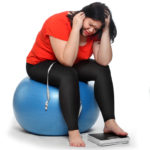By David Blyweiss, M.D., Advanced Natural Wellness
May 15, 2020
A lot of gyms are closed these days due to the coronavirus. So it’s no surprise I’m seeing more runners than usual jogging around my neighborhood.
You know, I once thought it’d be good to take up running myself. It sounded like a great idea at the time. I knew I wasn’t getting enough physical activity.
But, somewhere around the second or third week, I wised up. Suddenly, the idea of taking even one more run made my body just ache.
My knees constantly felt sore. My back hurt. And honestly, I felt even worse than I had when I started my running experiment.
That’s when I sat down and gave serious thought to the pros and cons of jogging and running.
The pros are pretty obvious…
MD Exposes the Hidden Danger to Your Eyes

When your eyesight starts to fail, it's a real problem. Suddenly you can't go to the grocery store... you can't get to the doctor if you have an emergency... you can't meet your friends for dinner…
Your "regular" doctor doesn't have time to keep up with the latest research. And the same goes for eye doctors. They go to school to learn how to fit you for glasses and contacts, but have no way of preventing the damage and loss of eyesight that threatens your freedom and independence.
Let me show you something that explains a LOT about how your eyes work.
In my FREE Special Report, I'll show you a HUGE, untapped resource for your eyes that safely and naturally restores clear, effortless eyesight.
Click here to get started...
Running and jogging are good for cardiovascular health. They pump up long capacity. These are pretty important considerations when it comes to your long-term health and well-being… and the reason I started running in the first place.
But what about the cons of running?
But what about the strain it was putting on my body? Was it really healthy for me to expose my joints to long sessions of pounding over and over again?
Certainly that type of high impact exercise is going to result in a lot of wear and tear on the knees and hips.
All in all, I concluded that running and jogging are a lousy form of exercise for joint health.
And what was hammering the pavement every day doing for my muscle strength? I realized the answer was “not much”.
Sure, it was building endurance in my leg muscles, but it does little to improve their actual strength. And it does nothing to build – or even maintain – the upper body strength you need to lift your grandchildren, unload a 40 bag of fertilizer from the car or even carry those heavy shopping bags into the house.
The funny thing is, 50 years ago people didn’t run or jog for exercise. These activities were reserved for athletes and military personnel who needed a great deal of stamina and endurance to perform their jobs. People like you and I would never have thought of it.
Then, in 1977, a fellow by the name of Jim Fixx wrote a book called “The Complete Book of Running”. At first, people thought he was some crackpot health nut. But he went on to revolutionize running and jogging as a form of exercise by appearing on television and radio talk shows. And it didn’t take long before the craze caught on.
Are You Suffering From...
- Love handles and a pot belly
- Romance that isn't what it used to
- Forgetfulness and inattention
- Low (or no) strength and endurance
- A sex drive that's shifted into neutral...or worse
If so...you may have Mature Male Burnout. Click here to discover more about this unique condition and what you can do about it.
In an ironic twist of events, Fixx died at the age of 52…. while jogging in Vermont.
Here’s Something You Can Do Instead of Running… Sprint!
So, instead of running or jogging for miles and miles, why not try this instead? Sprinting is a more effective way to lose fat, build muscle and improve balance and stability.
More specifically, you’ll want to do high intensity interval training (HIIT). It’s a much better way to exercise when it comes to boosting your lung capacity, improving endothelial function, increasing insulin sensitivity and regulating blood pressure.
Best of all, it doesn’t require pounding the pavement for 40 to 60 minutes a day. It only takes about 15 to 25 minutes daily with even better results.
The reason is simple. HIIT requires explosive exertion and intensity. This type of exercise burns more calories and keeps your metabolism ramped up long after you’ve finished your workout.
But that doesn’t mean it’s hard to do. In fact, it’s quite simple. All it involves is quick bursts of high intensity exercise followed by short recovery breaks.
Start out with something as simple as walking. Just walk at a normal pace for a few minutes, then burst into a sprint for about 30 seconds.
You don’t even have to sprint. Just enter a brisk walk for those 30 seconds. Then slow down and walk normally for two or three minutes followed by another 30-second brisk walk or sprint. Repeat four to six times.
As it becomes easier, try increasing the intensity of the sprint and shortening your recovery time. (i.e., a 30 second full-out burst, followed by lesser and lesser minutes of easy walking.)
I also recommend adding other HIIT exercises to work your larger muscle groups for strength and balance. You can also add HIIT exercises to focus on the muscles in your upper body for improved stability and power.
This includes things like push-ups, squats, sit-ups and even jumping jacks. Just perform the exercise for 30 seconds. Take a short break then do it for another 30 seconds for three to five sets.
SOURCES:
Matsuo T, et al. Effects of a low-volume aerobic-type interval exercise on VO2max and cardiac mass. Med Sci Sports Exerc 2014;46:42–50.
Guiraud T, et al. High-intensity interval training in cardiac rehabilitation. Sports Medicine 2012;42:587–605.
Jelleyman C, et al. The effects of high-intensity interval training on glucose regulation and insulin resistance: a meta-analysis. Obesity Reviews 2015;16:942–61.
Molmen-Hansen HE, et al. Aerobic interval training reduces blood pressure and improves myocardial function in hypertensive patients. Eur J Prev Cardiol 2012;19:151–60
Viana RB, et al. Is interval training the magic bullet for fat loss? A systematic review and meta-analysis comparing moderate-intensity continuous training with high-intensity interval training (HIIT). Br J Sports Med. 2019;53:655-664.







